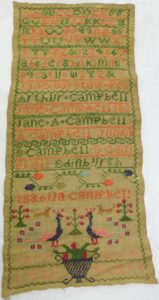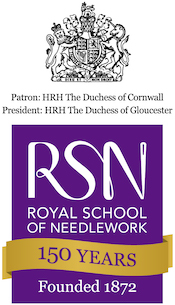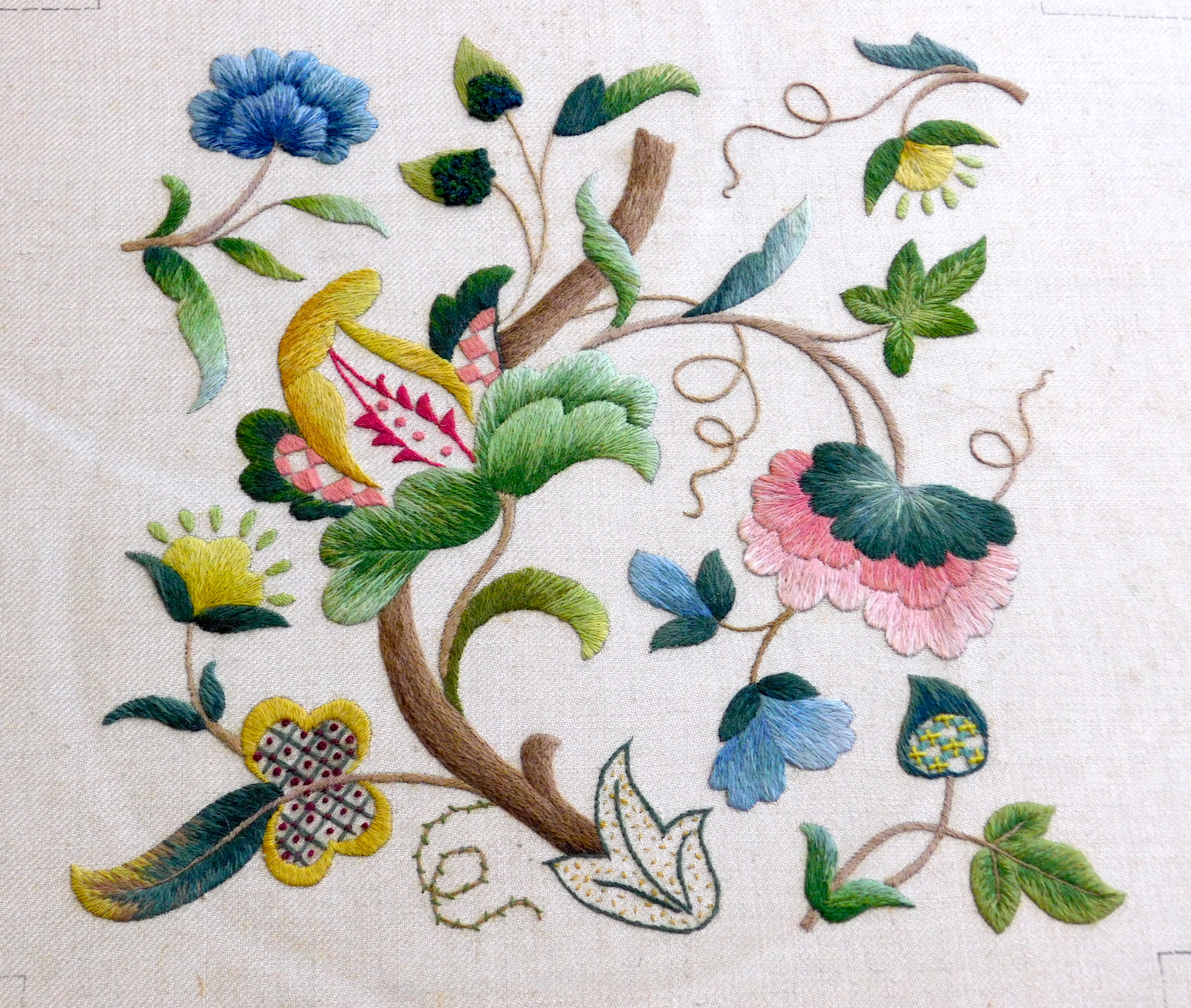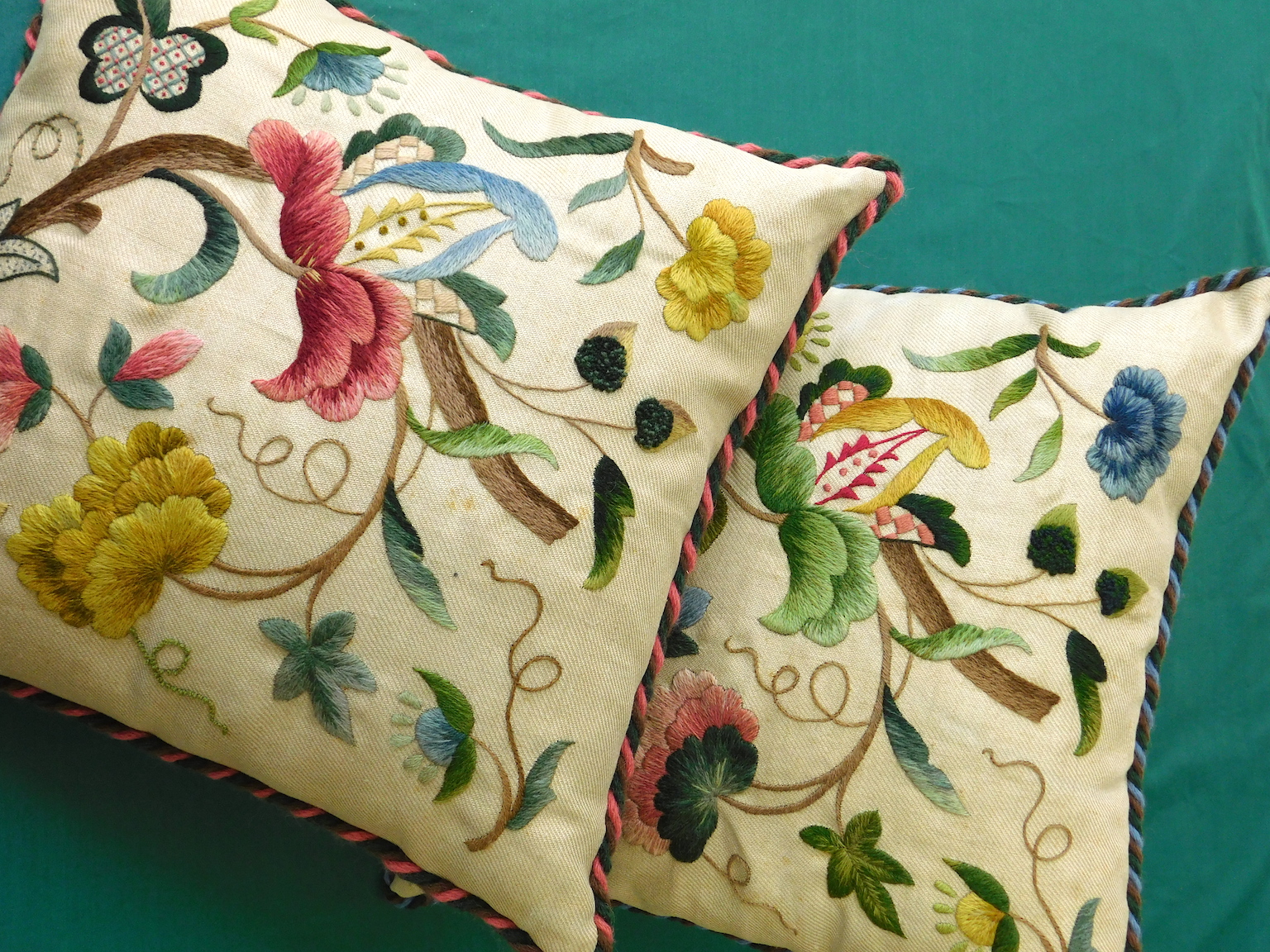Latest news
Keep up to date with all the latest news from the Royal School of Needlework
RSN Embroidery Studio: Home Interiors
21st May, 2020
Many of the pieces that come into the RSN Embroidery Studio are of sentimental value with amazing stories behind them. We often see samplers that can be traced back via the family tree sometimes opening another world to the family ancestors.
 A client brought us a sampler which was amongst her mother’s sewing equipment. One of the names embroidered in to it is of her father’s ancestors. The client assumes that her mother had kept the sampler for this reason and was enthusiastic to research further into her paternal family tree, researching the individual names listed. The date on the sampler is 1839, and is in keeping with the style of that time.
A client brought us a sampler which was amongst her mother’s sewing equipment. One of the names embroidered in to it is of her father’s ancestors. The client assumes that her mother had kept the sampler for this reason and was enthusiastic to research further into her paternal family tree, researching the individual names listed. The date on the sampler is 1839, and is in keeping with the style of that time.
Fortunately, the sampler did not have any holes or broken threads on it, but it did have moth residue. The first process was therefore to lightly surface clean the sampler with a low suction conservation hoover before placing it on to a support fabric of linen. 
Once this was complete, we mounted the piece onto conservation grade card ready for framing. When placing any textile behind glass it is very important that the glass does not touch the textile and that air can flow between the two very different materials. The back should be sealed to prevent little insects getting in to make their home and have a feast!
The final sampler after restoration:
The sampler was not the only piece our client brought to us, she also brought two unfinished Jacobean Crewelwork pieces. These embroideries were originally destined as covers for dining chairs. The client’s mother spent a lot of her childhood stitching as she had a disability which meant running around was not a possibility. She learnt to sew beautifully, not just in ‘Jacobean’ stitches but also in Whitework, and turned her hand to embroidered pictures and making embroidered boxes.
The chair seats were not completed as the client’s grandmother left a set of more grand chairs, and she suspects that her mother started working on a different project instead. The client’s mother was a member of the Broderers of York Minster, which she loved and her work is still on display and in use in the Minster. From what we can see, she was a very accomplished embroiderer.
The RSN Embroidery Studio had the satisfying task of finishing the embroidery and making the pieces into cushions – not as straight forward as you might think!
The Studio Embroiderers firstly had to match the thread colours, taking in to consideration how the client’s mother would have continued to work them and where she would have placed the colours and stitches. Each cushion had different areas worked which gave us a clue as to her intentions as well as the decisions she had already made on the areas she had completed. In addition, it is the skill of the RSN Studio Team to adapt their own style and tension to suit that of an original piece of work so that it does not look like the work of two different people. This skill, and the ability to adapt the natural way of working of a highly trained RSN Embroiderer, comes with experience and confidence in the techniques as well as one’s own ability.
The cushions were constructed with a linen fabric back, a similar weight to the twill on the front. Using a spot cleaning method, we needed to remove some design marks in the corners, which were there to show the corner position for the chair pad. We used a feather cushion inner and chose a size larger as this will give more support to the embroidery in the future, keeping it from being crushed, which could happen if the inner was too soft. We finished the cushions with a hand twisted woollen cord taking the colours from the cushion so that each one was different.
We were delighted with the final result and so was our client, who has donated the four remaining chair seats to the RSN. We will use them for training the Future Tutor students during their Studio time. In this particular case, their training will be as if a client has brought them a commission and they will learn how to complete the work, from estimating the time and cost, to the thread quantity and making it up either as a cushion or a chair pad. These are important and, indeed, vital skills required when either working in the RSN Studio or when they are working Freelance.
We thought that we would let our client have the final word: “I do not have my mother’s talent in either stitching or the eye for colour so I am immensely grateful to the ladies who completed the cushions. I cannot tell whose work is whose, but as they sit on my sofa I look at them and feel my mother’s presence.”



